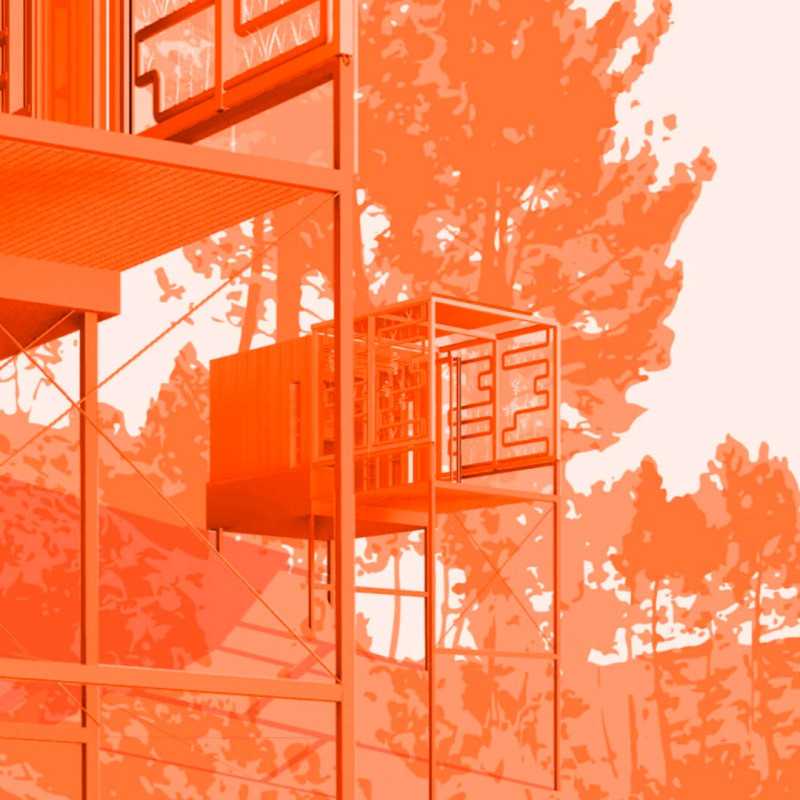5 key facts about this project
The Crate House is a modular and adaptable accessory dwelling unit located in Vale de Moses, Central Portugal. It challenges the typical ideas surrounding small living spaces by focusing on adaptability and sustainability. The design connects with its coastal environment, aiming to balance human needs with nature. Through its innovative concept, it addresses modern living requirements while promoting a lower impact on the environment.
Design Philosophy
The architecture reflects the principle that living in a smaller space does not require giving up comfort or personal belongings. Flexibility plays a crucial role, allowing spaces to adjust to different uses as the needs of the occupants change. The structure's prefabricated and modular nature enables quick assembly and disassembly, making it easy to move to various locations and climates.
Sustainability Features
A significant focus of the Crate House is the integration of sustainable technologies. The retractable photovoltaic system ensures energy efficiency. An activated carbon filter improves indoor air quality, contributing to a healthier living environment. A hydroponic greywater treatment system supports food production and ensures responsible use of water. Furthermore, the design includes an adaptation of the Harold Hay Roof Pond that helps produce oxygen and supports sustainable food sources.
Architectural Composition
The ground level is designed to make the most of a compact area. It includes a sleeping nook along with spaces for daily activities, all while keeping the footprint small. The roof plan introduces a wheel-bearing design that, along with precast concrete box culverts, allows for an expandable living area, reinforcing the project's modular approach.
Material Considerations
In construction, mass timber is used for the roof structure, which lends strength and promotes energy efficiency. Skylights are integrated into the timber framework, allowing natural light to enter the living space and creating a direct connection to the surrounding landscape. This thoughtful selection of materials, combined with the overall design strategy, illustrates a commitment to sustainability and responsive living environments.






















































